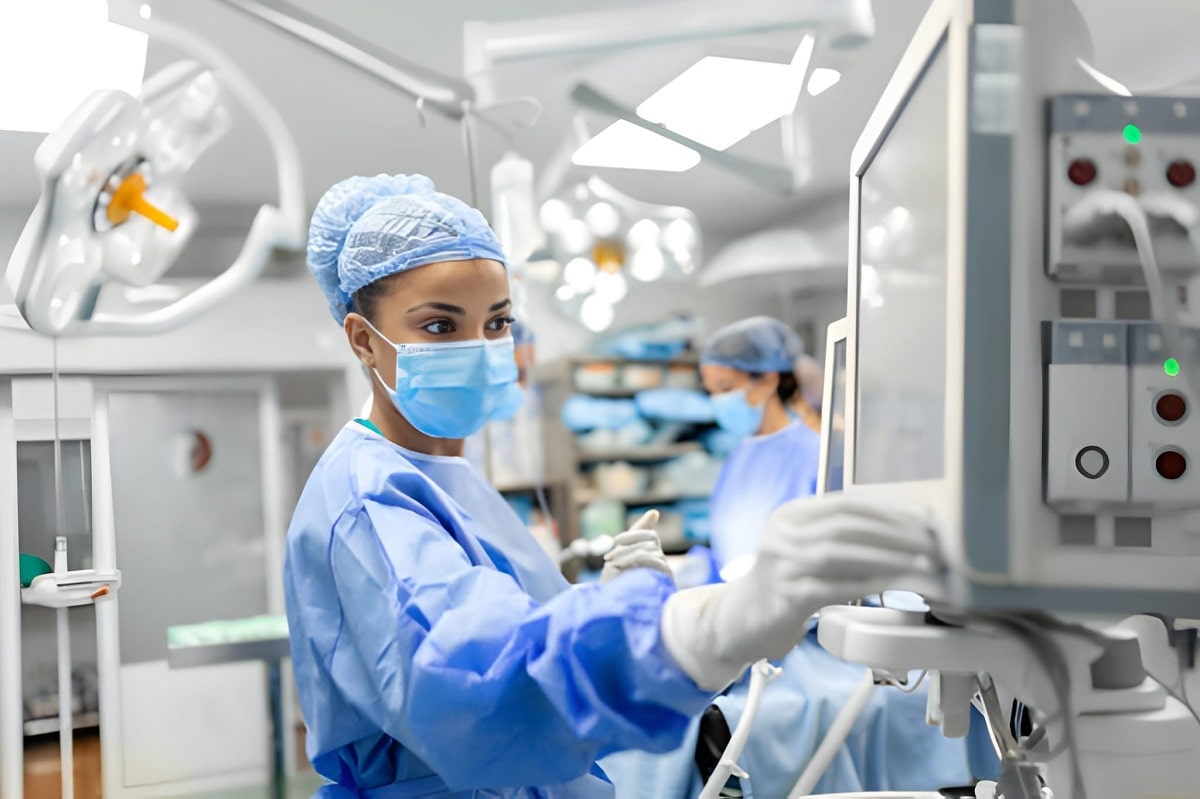The day-to-day running of modern laboratories is characterized by fast pace, so it is crucial to make every analysis and test as efficient as possible. Pharmaceutical, healthcare, and research laboratories are among many industries gravitating toward more complex digital technological programs to improve their functioning. Among those solutions, there is a specific solution that could be noticed as the Laboratory Information Management System (LIMS). This blog will try to go further into details of LIMS from its advantages, uses, and how it optimizes operations in the pharmaceutical and healthcare industries.
Understanding Laboratory Information Management System (LIMS)
A LIMS is a complex information system intended to address issues related to the management of laboratory activities. This significantly assists in creating efficient workflows, a tracer of samples, dealing with data, and meeting the rules and requirements. Thus, LIMS unifies the multiple laboratory operations necessary for sample handling and analysis and puts them into one convenient hub for management and operations.
Benefits of Laboratory Information Management System
The advantages of LIMS implementation can hardly be overestimated since they help optimize the work of the laboratory and increase its productivity. Some of the key advantages include:
- Enhanced Data Management: LIMS can contain all the laboratory information that will make it easier to archive, search, and process the huge amount of data produced. It also reduces data redundancy meaning that data integrity is achieved, and everyone is working with the same source.
- Improved Workflow Automation: Some of these advantages include but are not limited to the following; LIMS automates sample tracking, data entry, and report generation, reducing the time spent on these tasks since they are usually tiresome. It results in faster delivery of services and thus enhances the rate of service delivery.
- Regulatory Compliance: Companies involved in the production of products that are used in laboratories such as pharmaceutical and healthcare companies, have legal compliance requirements. LIMS also affords GLP (Good Laboratory Practice), as well as FDA 21 CFR Part 11 retention of records and proven accountability.
- Enhanced Collaboration: Since LIMS can be used as a central working environment for all the employees of the laboratory, people can share information easily and communicate effectively. This, in turn, helps in the enhancement of coordination and reduction of economic risks in managing the laboratory.
- Accurate Reporting and Analytics: LIMS ensures it can produce spectrums of reports to laboratories in addition to providing great insights on data retrieved from the system. It is very useful information to enhance decision-making and to improve the laboratory functioning.
- Resource Optimization: The following ways are how LIMS operates to assist in better management of resources, such as inventory tracking, scheduling of equipment maintenance, and managing personnel. The optimization of the laboratory assets hence guarantees efficient and proper use of resources while also lowering costs.
LIMS in Pharmaceutical Laboratories
In the pharma sector where quality and other control issues are paramount, a Laboratory Information Management System forms a crucial part. Pharmaceutical laboratories handle a high number of samples, complicated processes, and all the while observing strict measures on quality. LIMS also helps out in such procedures since it makes them accurate and as well efficient.
Key Applications in Pharmaceuticals
- Sample Management: LIMS follows the samples from the time of collection up to disposal hence proper documentation of the samples. As such, this capability is important in preserving the credibility of the research and development functions.
- Quality Control: LIMS helps in achieving many of the aspects of quality control such as sample testing and result verification as well as report generation. It also reduces some level of human interference; thus, enhancing the quality control and standardization of operations.
- Regulatory Compliance: Pharmaceutical laboratories are bound by rules and regulations set by these authorities; FDCA in the USA and EMA in Europe for instance. LIMS also helps in making compliance as it keeps records for every transaction, produces reports, and makes it easy to inspect.
- Research and Development: During the R & D stage, LIMS deals with experimental information and updates the status of the ongoing work as well as share information across scientists. The proper organization of data also helps to speed up the creation of new treatments and medications.
LIMS in Healthcare and Pathology Labs
LIMS has another major contribution in healthcare and pathology labs where it plays a vital role in increasing productivity as well as accuracy of work. Most of these laboratories are involved with diagnostics and patient information, thereby involving the need for data control and healthcare compliance.
Key Applications in Healthcare
- Sample Tracking: LIMS is also useful in tracking the patient samples right through the testing process to help in the identification process thus minimizing the possibility of contaminating the samples. This tracking is crucial for preserving the accuracy of the tests and diagnoses conducted on the patients.
- Data Integration: LIMS can collect data, generated in different sources like EHR, laboratory instruments, and other health care systems. The integration offered by this concept offers a depth of understanding of patients’ records for enhanced diagnosis and subsequent intervention.
- Regulatory Compliance: A healthcare lab has to coordinate with the CLIA (Clinical Laboratory Improvement Amendments), and HIPAA (Health Insurance Portability and Accountability Act). Here, LIMS’s ability to guarantee compliance through the use of fully secure, precise, and well-documented records is exhibited.
- Pathology Lab Software: LIMS can be functionalities that provide extended software in the jurisdiction of pathology laboratories from sample collection to reporting. This software facilitates the organization and mechanization of some fundamental tasks worked in laboratories of pathology and also offers exhaustive comprehensiveness of structural pathology data.
The Role of LIMS in Healthcare
The adoption of LIMS in healthcare facilities leads to change in health sectors. It also plays an important role in increasing the efficiency of the work and, consequently, the effectiveness of treating patients.
Benefits in Healthcare
- Improved Accuracy: Some of the advantages of LIMS are the reduction of human error especially in data entry, sample handling as well as result reporting. Precise diagnostic tests are essential for correctly identifying a disease and monitoring the patient’s health for progress.
- Faster Turnaround Times: Due to the capabilities to automate test sample tracking and many other things, LIMS shortens the time needed to perform tests and prepare reports. This speed is important in areas where medication or operations are performed, where the speed at which a patient is diagnosed determines their fate.
- Enhanced Patient Care: In this system, information needed by health care providers is compiled and made available to them. This has positive direct implications or influence on the BPN as it enhances clinical decision-making in treating patients.
- Cost Efficiency: With the support of LIMS, all resources are used effectively, consumption of resources and expenses are cut to the minimum, and waste is excluded. All these cost savings are more so precious in healthcare facilities given the fact that cash is usually tight.
Future Trends and Innovations in LIMS
With advancing technology, LMIS is also experiencing relative changes in terms of function and capacity in the management of a laboratory. Every industry is bound to advance and innovations forecast in the LIMS of the future will bolster laboratory operations.
Key Trends
- Cloud-Based LIMS: Currently, there is a trend of implementing cloud-based LIMS systems since they are flexible and easily accessible besides cutting down costs of IT structures. Flexible solutions include cloud-based solutions, these help when dealing with teams that are located in different regions.
- Integration with IoT and AI: The physical expansion of LIMS solutions with IoT devices and the application of AI in laboratories is soon going to change the dynamics in labs. Connectivity, through the Internet of Things, ensures the instruments report real-time data while Artificial Intelligence enables data analysis and decision-making.
- Mobile Accessibility: The portable LIMS solutions enable the laboratory personnel to be in control of data and tasks on their mobile devices. This mobility improves the flexibility and adaptability in the running of a laboratory.
- Personalized Medicine: Thus, in the process of the age of personalized medicine, LIMS is useful for the management of genetic and molecular details. Further, this capability aids in establishing diagnostic biomarkers and ID of novelty treatments that help in precision medicine.
Conclusion
LIMS is undoubtedly a must-have in the contemporary laboratory setup as is evident from the information above. LIMS holds the potential in various aspects and exerts in fields of pharmaceutical research, diagnosing instruments in medical facilities, and pathology departments. When laboratories implement the best LIMS technology, there will be an improvement in the general organizational efficiency and reduced operating costs that will help in the improvement of patient’s health and efficiency in doing more research.
The adoption of LIMS Play In Healthcare solutions as a part of laboratory functioning is not only a natural trend, but a necessity in the modern context of the overwhelming amount and high demand for accurate data. By adopting this particular technological innovation, it is highly probable to work on a better, faster, and more creative outcome for lab operations.











